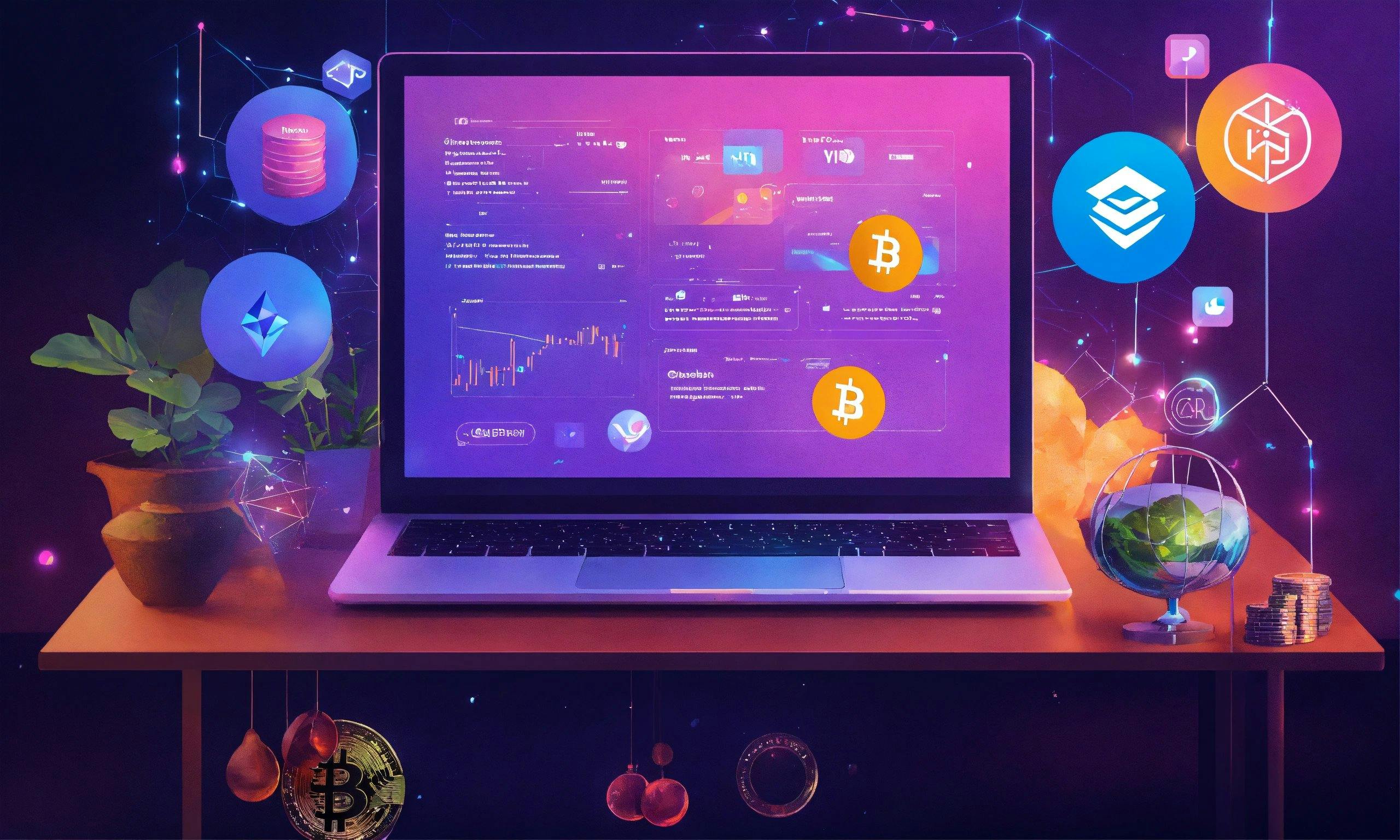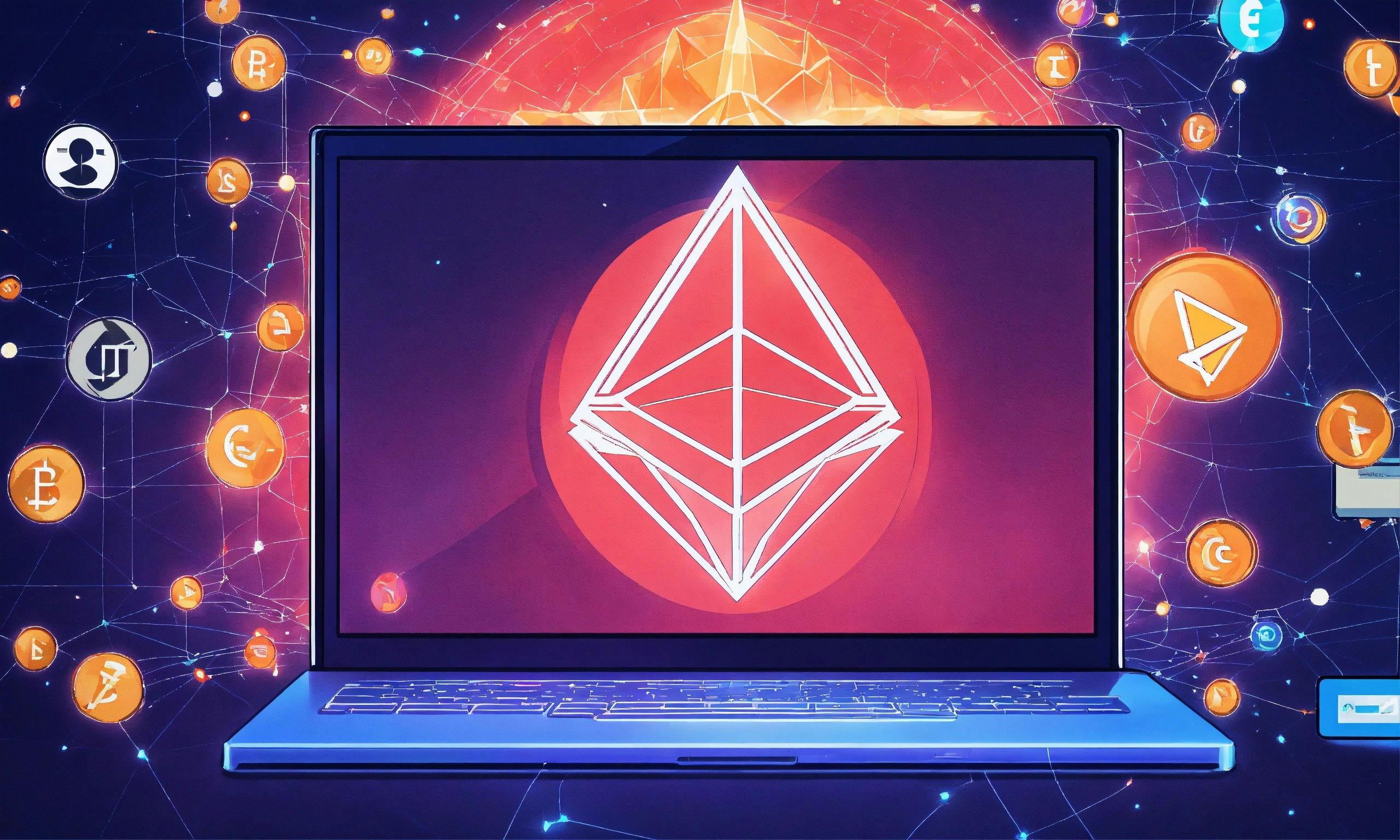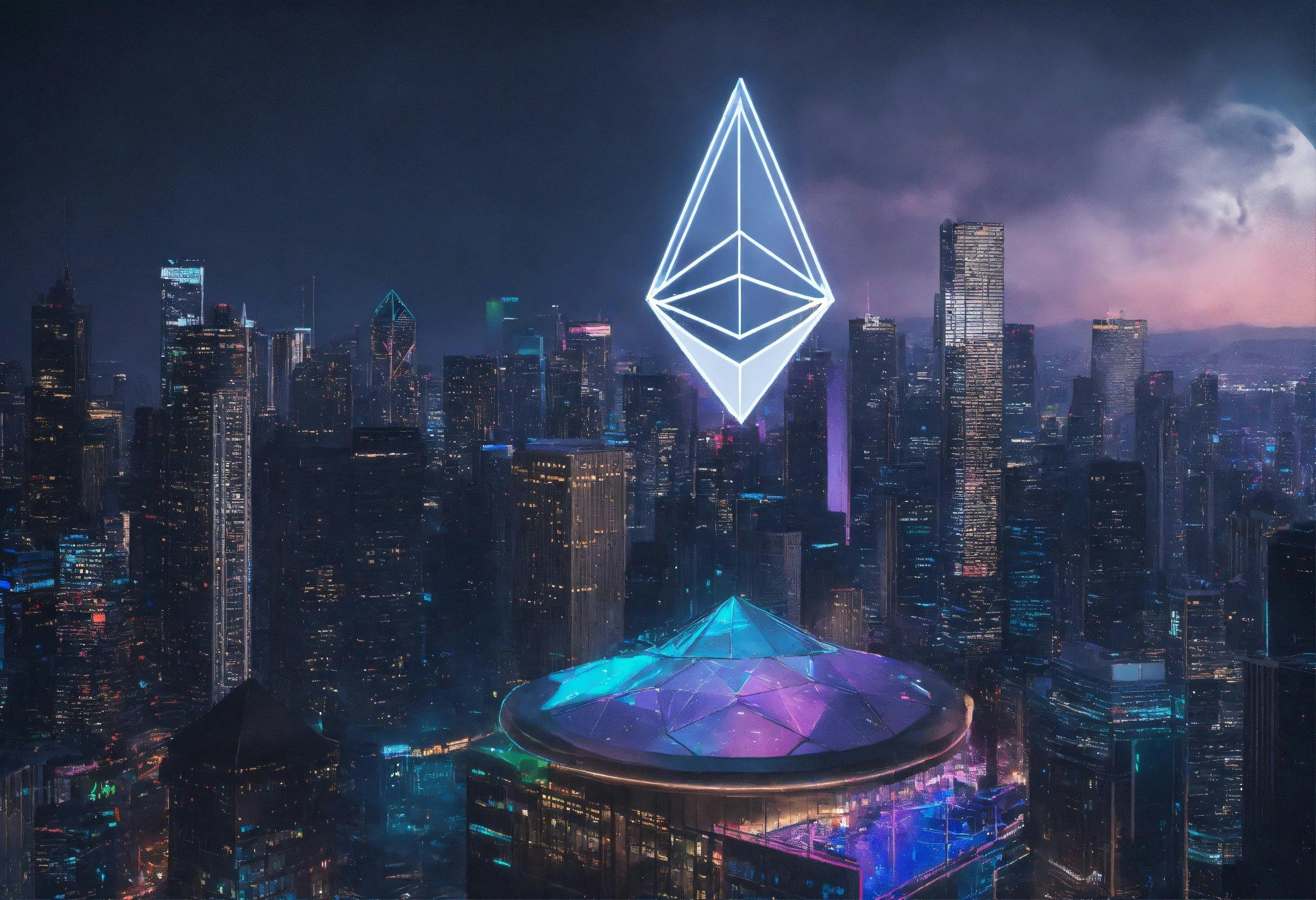From Beginner to Builder: Mastering Blockchain Development in 2024
Demystify the future, master the technology: Become a sought-after blockchain developer.
Part 1: Frontend Technologies

This section delves into the essential frontend technologies every aspiring full-stack blockchain developer needs to master in 2024. From laying the foundation with HTML and CSS to building dynamic interfaces with JavaScript frameworks like React and Next.js, we'll equip you with the tools to create captivating and user-friendly blockchain applications.
1. HTML
Overview:
HTML (HyperText Markup Language) forms the backbone of web pages, providing structure and meaning to content. By understanding HTML, you'll learn how to create well-organized and semantic layouts, crucial for both user experience and search engine optimization (SEO).
Important Topics:
Core HTML elements and their attributes
Semantic markup for clear content structure
Forms and user input
Introduction to basic DOM manipulation
Accessibility best practices
Resources to Learn:
Interactive Tutorial:https://www.w3schools.com/html/
Comprehensive Guide:https://developer.mozilla.org/en-US/docs/Learn/HTML/Introduction_to_HTML/Getting_started
Engaging YouTube Course:https://www.freecodecamp.org/news/html-css-11-hour-course/
2. CSS
Overview:
CSS (Cascading Style Sheets) breathes life into HTML by adding visual elements like colors, fonts, and layouts. Mastering CSS empowers you to craft visually appealing and responsive interfaces that adapt seamlessly to different screen sizes and devices.
Important Topics:
Selectors and specificity
Styling properties and values
Positioning and layout techniques
Media queries for responsive design
Basic animations and transitions
Resources to Learn:
Interactive Tutorial:https://www.w3schools.com/css/
Official Documentation:https://developer.mozilla.org/en-US/docs/Web/CSS
In-Depth Video Course:https://www.freecodecamp.org/news/how-to-use-animations-in-css/
3. JavaScript
Overview:
JavaScript adds interactivity and dynamism to web pages. From handling user input and animations to building complex web applications, mastering JavaScript is essential for modern frontend development.
Important Topics:
Core JavaScript syntax and data types
Functions, control flow, and object-oriented programming
Asynchronous programming with promises and async/await
DOM manipulation and event handling
Introduction to modern JavaScript frameworks
Resources to Learn:
Interactive Tutorial:https://www.w3schools.com/js/
Extensive Documentation:https://developer.mozilla.org/en-US/docs/Web/JavaScript
Practical YouTube Series:https://www.freecodecamp.org/news/full-javascript-course-for-beginners/
4. React
Overview:
React is a popular JavaScript library for building reusable UI components, allowing you to create complex and efficient user interfaces. In the blockchain space, React is commonly used to develop user-friendly dApps (decentralized applications).
Important Topics:
Components and JSX syntax
State management with Hooks and Redux
Props and data flow
Routing and navigation
React best practices and community conventions
Resources to Learn:
Official Tutorial:https://legacy.reactjs.org/docs/getting-started.html
Interactive Documentation:https://legacy.reactjs.org/
Beginner-Friendly Video Course:https://www.freecodecamp.org/news/tag/react/
5. Tailwind CSS
Overview:
Tailwind CSS is a utility-first CSS framework that provides pre-built styles for common UI elements, allowing for rapid development and a consistent design language. This makes it a popular choice for building blockchain interfaces.
Important Topics:
Utility classes for typography, layout, and components
Responsive design with Tailwind
Customization and extending Tailwind
Integration with React and other frameworks
Resources to Learn:
Official Documentation:https://v2.tailwindcss.com/docs
Tailwind Play (Interactive Playground):https://play.tailwindcss.com/
Community-Driven Videos and Tutorials:https://www.youtube.com/watch?v=lCxcTsOHrjo
6. Next.js
Overview:
Next.js is a React-based framework for building performant and server-rendered web applications. It offers features like server-side rendering, static site generation, and routing, making it ideal for complex blockchain applications with high traffic.
Important Topics:
Routing and data fetching with Next.js
Server-side rendering and static site generation
API routes and integration with blockchain nodes
Next.js best practices and performance optimization
Resources to Learn:
Official Documentation:https://nextjs.org/
Part 2: Diving into Blockchain Technology

This section delves into the heart of blockchain development, equipping you with the knowledge and tools to build decentralized applications. We'll explore core concepts, delve into the powerful Solidity language, and cover popular development frameworks like Foundry and Hardhat.
1. Blockchain Core Concepts (including Bitcoin and Ethereum)
Overview:
Before building on blockchain, understanding its fundamental principles is crucial. This section covers key concepts like decentralization, consensus mechanisms, cryptographic primitives, and smart contracts. Additionally, we'll explore two leading blockchain platforms, Bitcoin and Ethereum, highlighting their differences and use cases.
Important Topics:
Decentralization and its implications
Consensus mechanisms (e.g., Proof of Work, Proof of Stake)
Cryptography: hashing, digital signatures, public/private keys
Smart contracts: functionalities and limitations
Introduction to Bitcoin and Ethereum technology
Comparison of Bitcoin and Ethereum use cases
Resources to Learn:
Comprehensive Guide:https://developer.bitcoin.org/reference/
Youtube Tutorial:https://youtu.be/fF_yTe7h1hQ?si=DZRUIF2ZLQoR_JEb
2. Solidity (including Oracles, DAOs, Upgradable Contracts, Stablecoins)
Overview:
Solidity is the programming language specifically designed for writing smart contracts on Ethereum and other EVM-compatible blockchains. Understanding Solidity unlocks the potential to build dApps that manage and automate transactions, creating truly decentralized systems.
Important Topics:
Solidity syntax and data types
Writing basic smart contracts for token transfers and voting
Understanding functions, modifiers, and events
Working with data feeds and oracles
Decentralized Autonomous Organizations (DAOs)
Upgradable smart contracts and migration strategies
Building stablecoins and tokenomics
Resources to Learn:
Official Documentation:https://docs.soliditylang.org/en/v0.8.17/: https://docs.soliditylang.org/en/v0.8.17/
Advanced Solidity Course:https://youtube.com/playlist?list=PL4Rj_WH6yLgWe7TxankiqkrkVKXIwOP42&si=Rhw-vYuem0gGoeXD
3. Foundry / Hardhat
Overview:
Foundry and Hardhat are popular development frameworks designed to streamline the smart contract development process. Foundry offers a powerful and modular approach, while Hardhat provides a versatile testing and deployment environment. Understanding both empowers you to choose the right tools for your project needs.
Foundry:
Key features: Modular architecture, built-in testing & debugging tools, extensive scripting capabilities
Resources: https://book.getfoundry.sh/
Hardhat:
Key features: Easy setup, flexible task automation, integration with testing frameworks
Resources: https://hardhat.org/
Comparison:
Consider Foundry for complex projects with diverse needs and advanced customization.
Choose Hardhat for its ease of use, testing focus, and rapid development capabilities.
Remember, this is just a starting point. As you delve deeper, explore their communities, tutorials, and documentation to unlock the full potential of these frameworks.
Part 3: Essential Tools and Libraries for Blockchain Development

This section equips you with the tools and libraries that form the backbone of your blockchain development journey. We'll explore popular options like web3.js, ethers.js, and delve into the functionalities offered by platforms like Thirdweb, Alchemy, and Moralis.
1. web3.js
Overview:
web3.js is a robust JavaScript library that provides low-level access to interact with Ethereum nodes and smart contracts. It's considered the foundational library for interacting with the Ethereum blockchain, offering functionalities like sending transactions, reading data, and managing accounts.
Important Features:
Contract interaction: calling functions, reading events, managing state
Account management: generating wallets, signing transactions
Node interaction: connecting to nodes, accessing blockchains
Web3 Provider support: flexibility for different node providers
Resources to Learn:
Official Documentation:https://web3js.readthedocs.io/en/v1.10.0/
Interactive Tutorial:https://youtu.be/hF0sNd66xO4?si=5XgzLc4NJ16p8v6F
2. ethers.js
Overview:
ethers.js is another popular JavaScript library specifically designed for interacting with Ethereum and similar EVM-compatible blockchains. It offers a higher-level abstraction compared to web3.js, providing a more developer-friendly experience with built-in functionalities like address validation, transaction signing, and contract abstraction.
Important Features:
Wallet abstraction: easy management of accounts and keys
Contract abstraction: simplified interaction with smart contracts
Providers for various node connections
Advanced features like transaction signing and encryption
Resources to Learn:
Official Documentation:https://docs.ethers.org/v5/
In-Depth Guide:https://youtu.be/yk7nVp5HTCk?si=chr1kE6LjmvtmD3u
3. Thirdweb / Alchemy / Moralis
Overview:
These platforms offer a wider range of functionalities beyond just interacting with blockchain nodes. They provide:
Thirdweb: Pre-built smart contracts and SDKs for common dApp features like tokenization, NFTs, and governance.
Alchemy: Developer tools and APIs for node access, monitoring, and off-chain data.
Moralis: BaaS (Backend-as-a-Service) solutions for authentication, database storage, and API access for blockchain data.
Important Features (varies by platform):
User authentication and authorization
NFT minting and management
Token issuance and management
On-chain and off-chain data access
Tools for development and deployment
Resources to Learn:
Thirdweb:https://portal.thirdweb.com/
Alchemy:https://alchemy.com/
Moralis:https://moralis.io/
Choosing the Right Tool:
Consider your project's needs: pre-built features vs. low-level access.
Evaluate pricing and free tiers offered by each platform.
Explore their documentation and communities for support.
Remember, this is just an introduction. Each platform offers extensive documentation and tutorials to delve deeper.
I hope this overview helps you understand the diverse toolset available for blockchain development. If you have any specific questions about these tools or would like me to elaborate on any aspect, feel free to ask!
Part 4: Backend Technologies and Beyond

This section explores the backend technologies and additional tools that complete the full-stack blockchain developer toolbox. We'll cover essential platforms like Git and Github for version control, delve into containerization with Docker, and discover popular backend languages and frameworks like Node.js, Rust, Go, Django, and databases like MongoDB and Postgres. Additionally, we'll introduce the InterPlanetary File System (IPFS) for decentralized data storage.
1. Git and Github
Overview:
Git is a distributed version control system (DVCS) crucial for managing code changes and collaboration. Github is a popular platform built on Git, offering additional features like code hosting, issue tracking, and community collaboration. Mastering these tools ensures organized development and seamless project management.
Important Topics:
Git fundamentals: branches, commits, pushing and pulling
Github workflow: repositories, pull requests, issue tracking
Collaboration best practices and branching strategies
Introduction to advanced Git features
Resources to Learn:
Interactive Git Tutorial:https://try.github.io/
Official Git Documentation:https://git-scm.com/docs
Github Guides:https://docs.github.com/en/get-started
2. Docker
Overview:
Docker is a containerization platform that packages applications and their dependencies into standardized units, ensuring consistent and portable environments across development, testing, and production. Understanding Docker streamlines your development workflow and facilitates deployment.
Important Topics:
Dockerfile basics: building images, defining environments
Running and managing Docker containers
Orchestration with Docker Compose
Continuous integration and deployment (CI/CD) with Docker
Resources to Learn:
Interactive Docker Tutorial: <invalid URL removed>: <invalid URL removed>
Official Docker Documentation:https://docs.docker.com/
Docker for Beginners Course: https://youtu.be/GFgJkfScVNU?si=PDI51vOEFQ0Xfp_F
3. Backend Languages and Frameworks
Choosing the right backend language depends on your project's needs and your own preferences. Here's a brief overview of popular options:
Node.js: JavaScript-based platform known for its speed and scalability, well-suited for real-time applications and APIs.
Rust: High-performance, memory-safe language gaining traction in blockchain development due to its speed and security.
Go: Statically typed, compiled language known for its simplicity and efficiency, popular for backend services and APIs.
Django: High-level Python framework known for its rapid development and vast ecosystem, suitable for complex web applications.
Resources:
Explore official documentation and tutorials for each language/framework.
Consider online courses and communities for further learning.
4. Databases: MongoDB vs. Postgres
Understanding the difference between these popular databases will help you choose the right one for your project:
MongoDB: NoSQL database known for its flexible schema and scalability, well-suited for storing and managing unstructured data.
Postgres: Relational SQL database known for its data integrity and security, suitable for structured data with complex relationships.
Resources:
Consult official documentation and tutorials for each database.
Explore online guides and tutorials comparing their features and use cases.
5. IPFS
Overview:
The InterPlanetary File System (IPFS) is a decentralized storage network aimed at creating a permanent and censorship-resistant way to store and share data. Understanding IPFS opens doors to building truly decentralized applications with distributed data storage.
Important Topics:
Core concepts of IPFS: addressing, data storage, retrieval
Integration with web3.js and other development tools
Building applications with IPFS storage and APIs
Resources:
- IPFS Documentation:https://docs.ipfs.io/
Need More Guidance? Don't Get Left Behind!

Connect with me:
Crypto: https://laborx.com/gigs/web3-guidance-and-assitance-44286
Non Crypto: https://www.buymeacoffee.com/moayaan.eth/extras
While this roadmap provides a solid foundation, diving into the world of blockchain development can be overwhelming, especially for beginners. Complex concepts, unfamiliar tools, and rapid advancements can easily lead to confusion and discouragement. But fear not, fellow aspiring developer! You don't have to navigate this journey alone.
Breakthrough the Barriers with Expert Guidance:
I understand the challenges firsthand. As a full-stack blockchain developer with a proven track record as a technical co-founder in a Netherlands-based Web3 startup, I've been there. I've faced the steep learning curve, navigated the ever-changing landscape, and emerged with the practical knowledge and insights to help others succeed.
Why Choose Me as Your Guide?
Real-world experience: I'm not just a teacher, I'm a builder actively shaping the Web3 space. I bring practical insights directly from the trenches.
Proven success: My co-founding experience demonstrates my ability to translate knowledge into successful projects.
Tailored guidance: I cater to your individual needs, offering personalized mentorship and support to overcome specific challenges.
Community focus: I believe in fostering a supportive learning environment where you can connect with other aspiring developers and grow together.
Ready to Accelerate Your Journey?
If you're serious about becoming a full-stack blockchain developer and don't want to get left behind, consider personalized mentorship. Together, we can:
Craft a personalized roadmap: Align your learning path with your specific goals and interests.
Tackle complex concepts: Break down difficult topics into digestible steps with clear explanations and real-world examples.
Build practical skills: Get hands-on experience through guided project development and portfolio building.
Stay ahead of the curve: Access exclusive industry insights and updates to future-proof your skillset.

